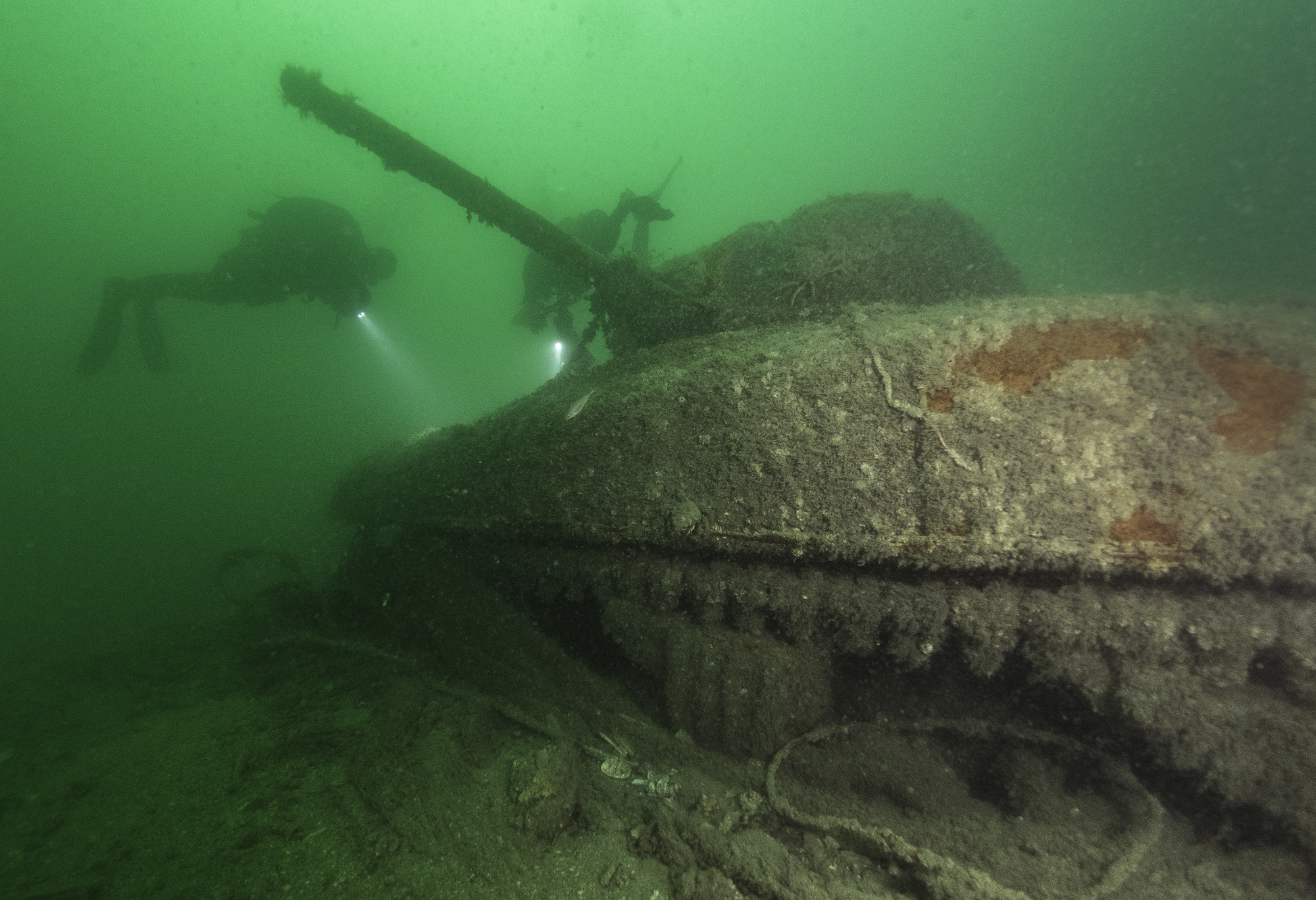
- Home
- Immersion on the wrecks of the Normandy landings
- Floating tanks
The inventory of the remains includes some thirty tanks. These were mainly amphibious tanks, Sherman tanks featuring a strange invention, Duplex Drive.
The Sherman Duplex Drive
Amphibious tanks were distinguished from conventional tanks by the addition of a canvas skirt, that was deployed using a system of rubber tubes inflated with compressed air, to ensure that the tank floated. When launched from a LCT, two propellers provided propulsion. This mechanism was meant to surprise the enemy, by making them think they were in the presence of simple boats.
The fate of these Sherman DDs (for Duplex Drive) varied greatly from one landing sector to another. At Juno Beach, the Canadians launched them only 600 m from the shore or even directly onto the beach, enabling 14 of the 19 amphibious tanks to reach their destination. In the American sectors, the LCT officers were instructed to launch the tanks no further than 2.9 nautical miles (5.4 km) from the beach, at the officers’ discretion. While 28 of the 32 tanks launched in front of Utah, an area fairly protected from the prevailing winds, managed to reach the beach, the situation was reversed at Omaha. There, 29 of the 32 amphibious tanks of the 741st Tank Battalion were launched far from the coast and only two reached the shore.
Locating the tanks
Part of the research conducted by the US Navy’s NHHC between 2000 and 2002 focused on the wrecks of these tanks. Since two of the 27 tanks sunk off Omaha were recovered by metal salvor Jacques Lemonchois, 25 tanks remained to be located. Twelve likely Sherman tanks were located by sonar and several of them were examined by ROV. The American research confirmed that the tanks had been launched from the targeted distance. However, the LCTs had to position themselves further east due to a strong current which, combined with the swell and the shortcomings of their design facing these conditions, caused the tanks to sink.
Other armour was located during the UKHO operation and the 2012-2013 campaign. Surveys conducted between 2017 and 2019 by the DRASSM have verified these different positions. Ultimately, the presence of 22 tanks lost off Omaha have been confirmed. The research conducted to date indicates that at least seven of them are Sherman DDs, due to the presence of the propeller attachment system (the propellers themselves are rarely preserved) and the metal projections that served as a support for the canvas skirt. In certain cases, it is also possible to recognise the copper tubes and discs that circulated the compressed air to deploy the canvas.
Partners and authors
Associated media
Open Media Library
Operation and launching of a Sherman Duplex Drive amphibious tank

Area covered during the multibeam echo sounder survey

Multibeam echo sounder survey of two amphibious tanks off Utah Beach

Amphibious tank lost off Sword Beach

3D photogrammetry of a Sherman amphibious tank off Sword Beach

Archaeologist examining the remains of an amphibious tank

Archaeologists examining the remains of an amphibious tank lost off Omaha Beach

